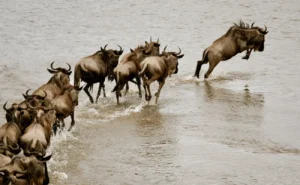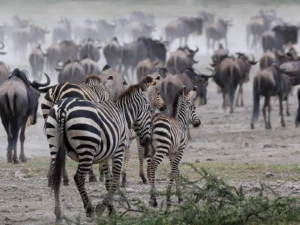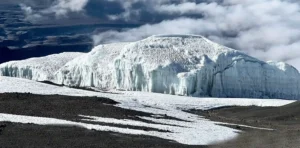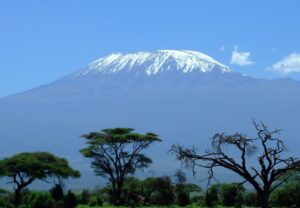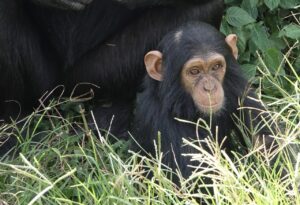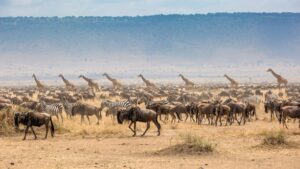There’s something magnetic about the peak of Kilimanjaro, something that pulls climbers from every corner of the world from seasoned mountaineers to complete beginners who may want nothing more than just to experience the magic of Africa’s rooftop. The peak of Kilimanjaro is not simply a mountain summit; it is a symbol of hope, determination, and the thought that ordinary people have the ability to accomplish extraordinary things.
At 5,895 meters, the summit of Kilimanjaro Uhuru Peak is the highest point in Africa, and climbing it is a life-changing adventure. The mountain requires resilience, smart preparation, and a little bit of adventure in your soul. In this guide, we’ll walk through everything you need to know to make it to the summit of Kilimanjaro safely, confidently, and fully prepared.
Whether you’re planning your first climb or returning for a second attempt, this ultimate travel-friendly guide breaks down route options, altitude tips, packing advice, training plans, and what to expect on summit night—all focused on conquering Kilimanjaro’s peak.
What Makes the Summit of Kilimanjaro So Special?
The top of Kilimanjaro is unique among high points in the world: It can be reached without technical climbing. No ropes, no ice axes, no hard technical training is required. This makes the peak of Kilimanjaro indeed a “walkable summit,” which puts it in the ranks of the most famous climbs on this planet.
Kilimanjaro is the only place where you walk through five completely different ecosystems on one journey:
- Rainforest
- Heather and moorland
- Alpine desert
- Arctic glaciers
- The barren, icy peak of Kilimanjaro
The contrast is unreal, and by the time you reach the top of Kilimanjaro, you will feel like having crossed several countries in several climates in one expedition.
Understanding the Routes to the Peak of Kilimanjaro
There are a number of routes to the summit of Kilimanjaro, each with its own character, difficulty, and scenery.
1. Machame Route: Most Popular
Machame Route is known as the “Whiskey Route.” Scenic, challenging, and great for acclimatization, this route is usually chosen by many climbers aiming for the peak of Kilimanjaro.
2. Marangu Route (Coca-Cola Route)
This is the only route that has hut accommodations, but it has a faster ascent. Because of that, reaching the peak of Kilimanjaro from this route can be harder for beginners.
3. Lemosho Route
This is a long, slow, gorgeous path across the Shira Plateau. It’s considered one of the best ways to reach the peak of Kilimanjaro with high success rates.
4. Rongai Route
This route is quiet and the most remote coming from the Kenyan side. A perfect choice for those who enjoy solitude on their way to the peak of Kilimanjaro.
5. Northern Circuit
The longest route with excellent acclimatization and views. If you want the highest chance of reaching the peak of Kilimanjaro, this is it.
Just How Difficult Will It Be to Reach the Top of Kilimanjaro?
The truth is that the summit of Kilimanjaro is grueling yet accomplishable. It’s an altitude problem, not a technical one.
You’ll hear many climbers say:
“It’s the hardest thing I’ve ever done, but the moment you see the peak of Kilimanjaro everything becomes worth it.”
The key factors are:
- Slow walking
- Good acclimatization
- Hydration
- Mental strength
Most people, when they reach the top of Kilimanjaro, just trusted the process, took their time, and remained positive.
Training for the Summit of Kilimanjaro
You do not need to be an athlete, but in order to reach the top of Kilimanjaro, you should train your body for long days of walking.
Here’s a simple three-month plan:
1. Hiking Practice
Go for long hikes, 10 km to 15 km. This simulates real conditions leading to the peak of Kilimanjaro.
2. Strength in the Legs
Squats, lunges, and step-ups make the climb to the summit of Kilimanjaro easier.
3. Cardio
Jogging, stair climbing, or cycling builds endurance for summit day.
4. Altitude Simulation (Optional)
If possible, sleep in high-altitude tents or hike mountains above 2,500 m to get ready for the peak of Kilimanjaro.
Packing List for the Summit of Kilimanjaro
Packing correctly can make or break your chance of reaching the peak of Kilimanjaro.
Essential Goods
- Waterproof hiking boots
- Warm down jacket
- Fleece jacket
- Windproof shell
- Headlamp-on: Very important at summit night on the way to the top of Kilimanjaro
- Gloves and liners
- Beanie
- Trekking poles
- Water bottles or hydration pack
The final push to the peak of Kilimanjaro can be freezing, so warm layers are everything.
Altitude Sickness and How to Handle It
Altitude is the main reason climbers fail to reach the peak of Kilimanjaro. Symptoms include:
- Headache
- Nausea
- Dizziness
- Shortness of breath
To increase your chances of reaching the peak of Kilimanjaro, remember:
- Walk slowly
- Drink 3–4 liters of water
- Eat regularly
- Take acclimatization days seriously
- Consider Diamox (consult your doctor)
Your guides will monitor your condition daily. Listen to them; they know how to get you safely to the peak of Kilimanjaro.
What to Expect on Summit Night
This is it: the final push to Kilimanjaro’s peak.
Summit night usually commences at midnight. The air is thin, cold, and quiet. Headlamps flicker in the darkness like fireflies, all heading toward the peak of Kilimanjaro.
The climb is slow, steady, and emotional. You’ll take small steps, breathe deeply, and keep going. When the sun finally rises behind Mawenzi, everything feels lighter.
When you reach Stella Point, the peak of Kilimanjaro is only about 45 minutes away. It will be a very gentle hike upwards, and right when you see the sign “Congratulations! You are now at the peak of Kilimanjaro, Uhuru Peak,” you are likely to cry and laugh at the same time.
That view—glaciers, crater rim, endless sky is something you’ll never forget.
Life at the Summit of Kilimanjaro
The summit of Kilimanjaro is icy, windswept, and breathtaking. The glaciers gleam in the early morning sun, while the crater itself looks otherworldly. You’ll take your photos quickly because it’s extremely cold at the peak of Kilimanjaro.
But standing there, even for a few minutes, makes every step worthwhile.
Descending from the Summit of Kilimanjaro
The descent from Kilimanjaro’s peak is easier on the lungs but harder on the knees. Trekking poles are of immense assistance. You will drop altitude in rapid succession, and the warm air will be a reward.
Best Time to Reach the Summit of Kilimanjaro
- January to March
- July to October
These months give you better weather and higher chances of reaching the peak of Kilimanjaro.
Why People Fail to Reach the Peak of Kilimanjaro
Following are the common mistakes:
- Walking too quickly
- Inadequate intake of water
- Poor gear
- Not sleeping enough
- Rushing the ascent
If you avoid these, there is a greater chance of reaching the summit of Kilimanjaro.
Why Reaching the Peak of Kilimanjaro Is Life-Changing
Standing at the peak of Kilimanjaro has been described as one of the most powerful moments in one’s life. It becomes a reminder of how far determination can carry you. But when you stand at the peak of Kilimanjaro, you’re not just on top of Africa; you’re on top of your own limits, doubts, and fears.
Closing Down
Reaching the peak of Kilimanjaro isn’t simply a destination, but a story that will be remembered forever. With the right preparation, gear, mindset, and support team, anyone is able to achieve the peak of Kilimanjaro and experience the magic within.
If this climb is on your bucket list, start preparing today; the peak of Kilimanjaro is waiting.

